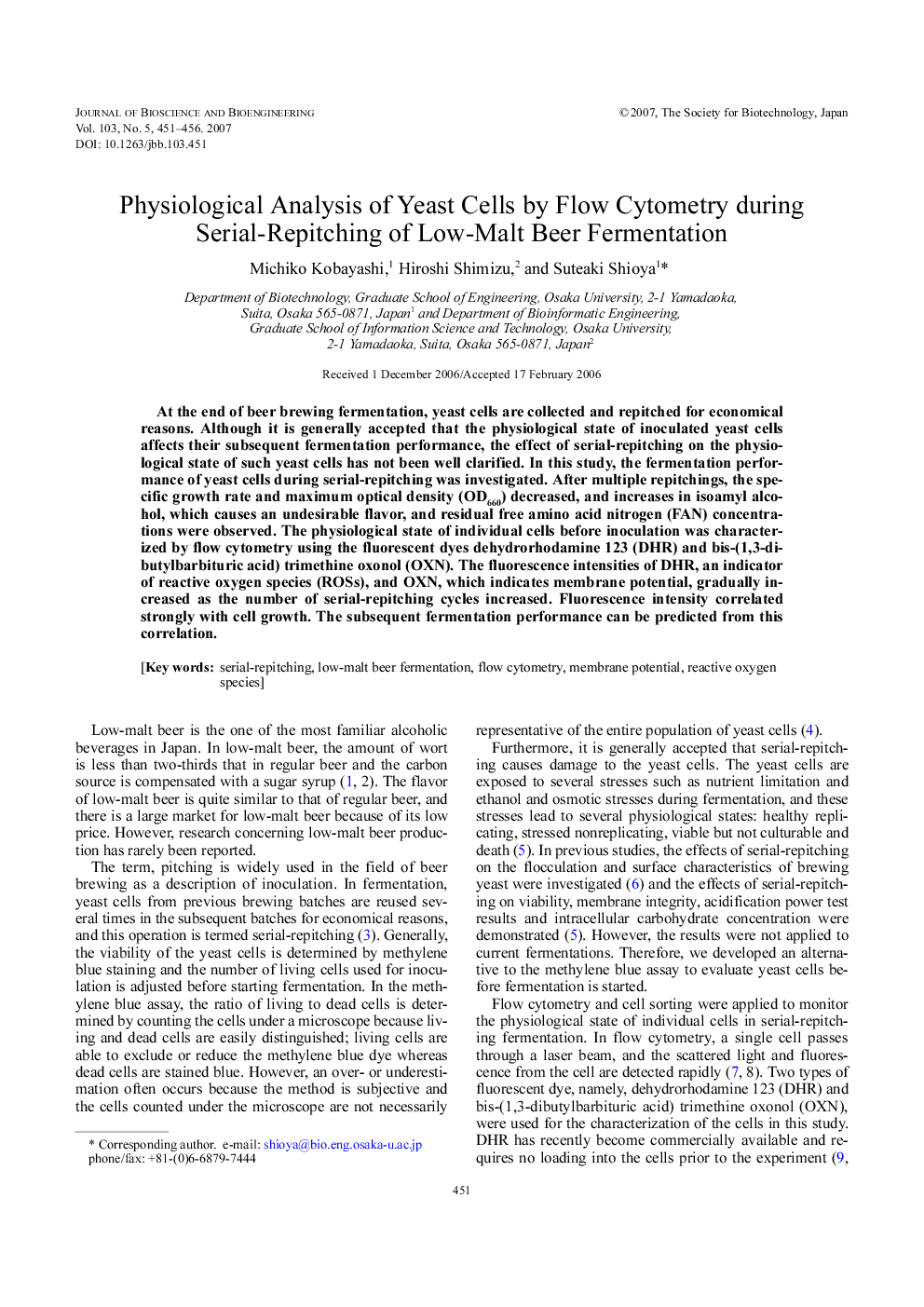| Article ID | Journal | Published Year | Pages | File Type |
|---|---|---|---|---|
| 22224 | Journal of Bioscience and Bioengineering | 2007 | 6 Pages |
At the end of beer brewing fermentation, yeast cells are collected and repitched for economical reasons. Although it is generally accepted that the physiological state of inoculated yeast cells affects their subsequent fermentation performance, the effect of serial-repitching on the physiological state of such yeast cells has not been well clarified. In this study, the fermentation performance of yeast cells during serial-repitching was investigated. After multiple repitchings, the specific growth rate and maximum optical density (OD660) decreased, and increases in isoamyl alcohol, which causes an undesirable flavor, and residual free amino acid nitrogen (FAN) concentrations were observed. The physiological state of individual cells before inoculation was characterized by flow cytometry using the fluorescent dyes dehydrorhodamine 123 (DHR) and bis-(1,3-dibutylbarbituric acid) trimethine oxonol (OXN). The fluorescence intensities of DHR, an indicator of reactive oxygen species (ROSs), and OXN, which indicates membrane potential, gradually increased as the number of serial-repitching cycles increased. Fluorescence intensity correlated strongly with cell growth. The subsequent fermentation performance can be predicted from this correlation.
